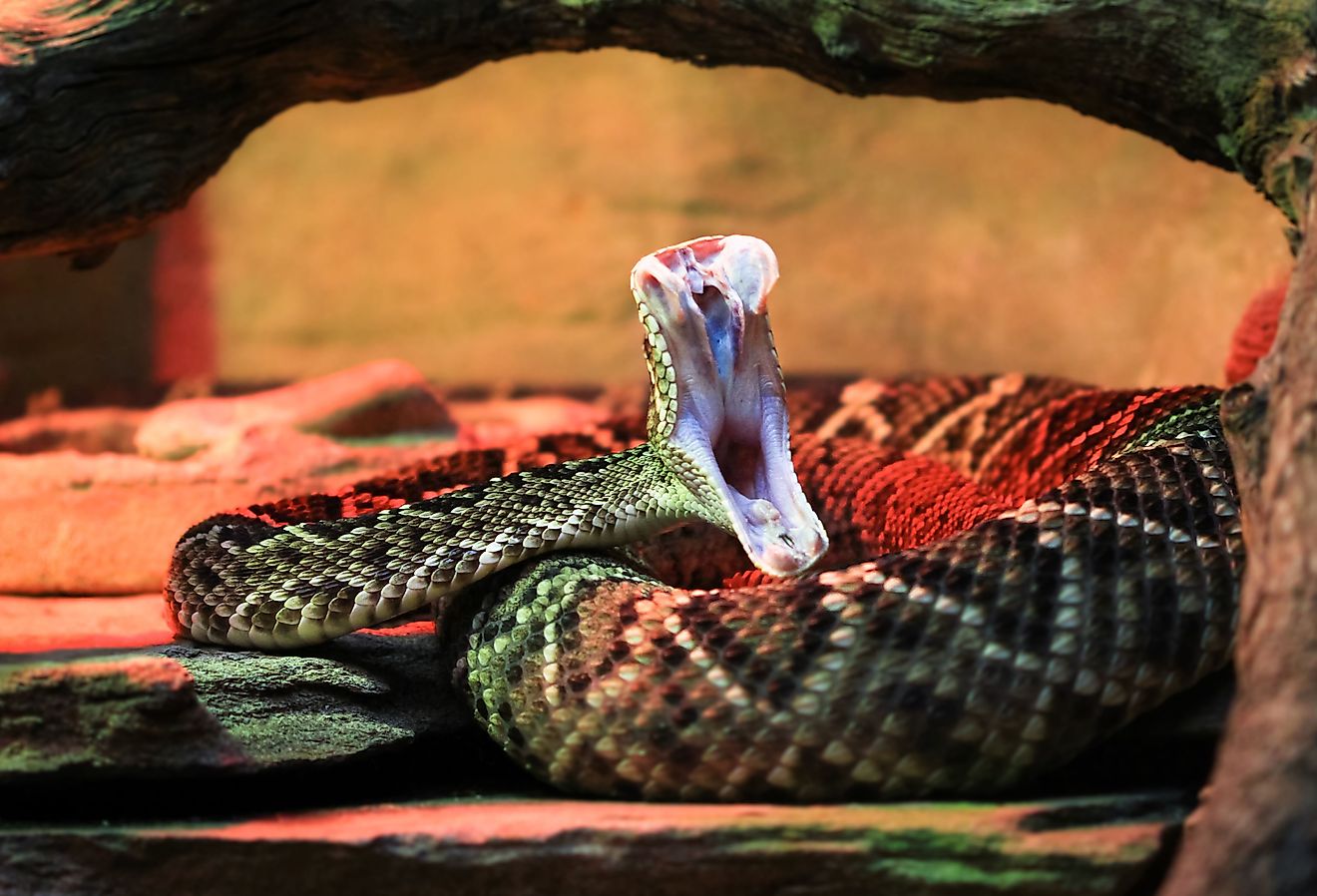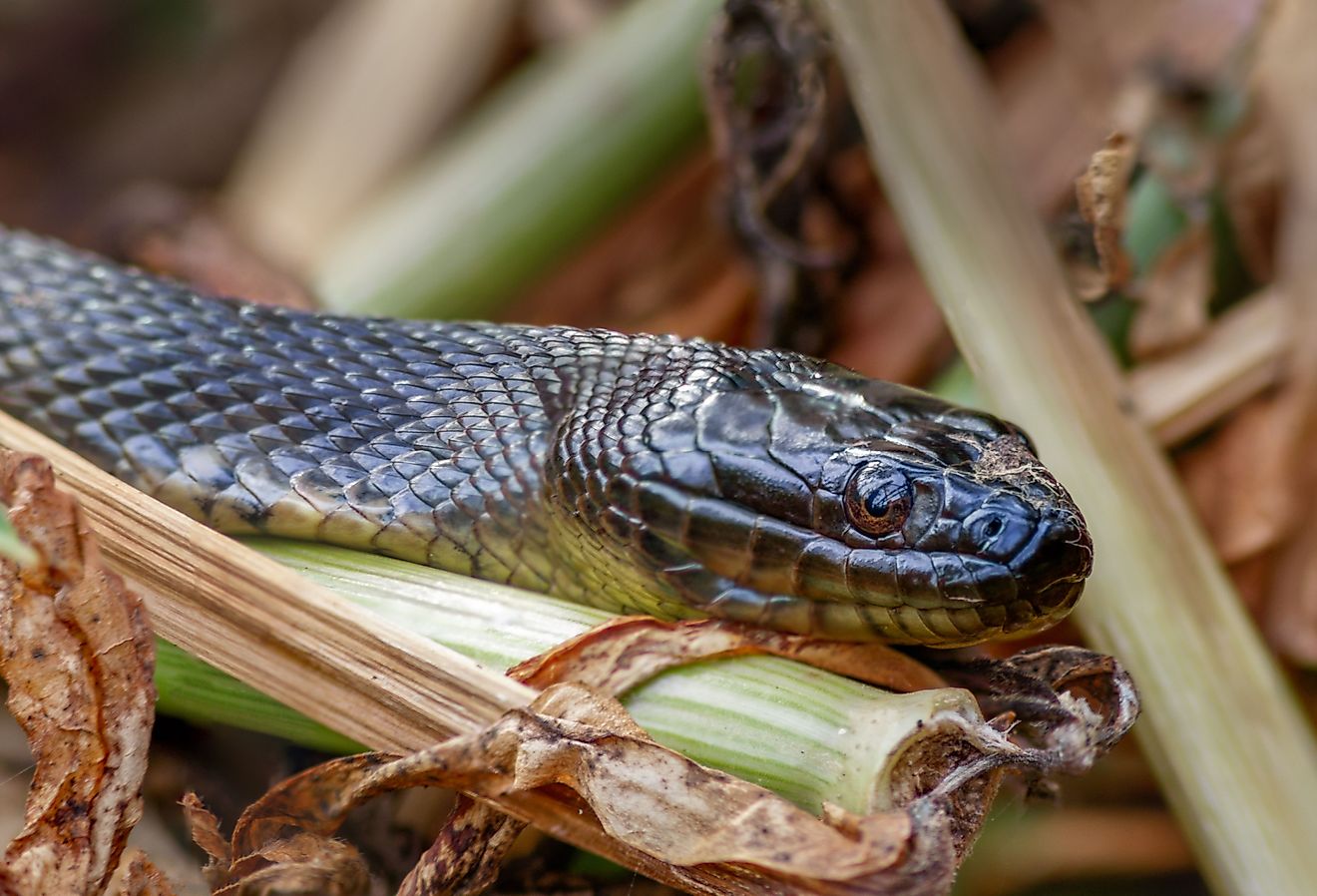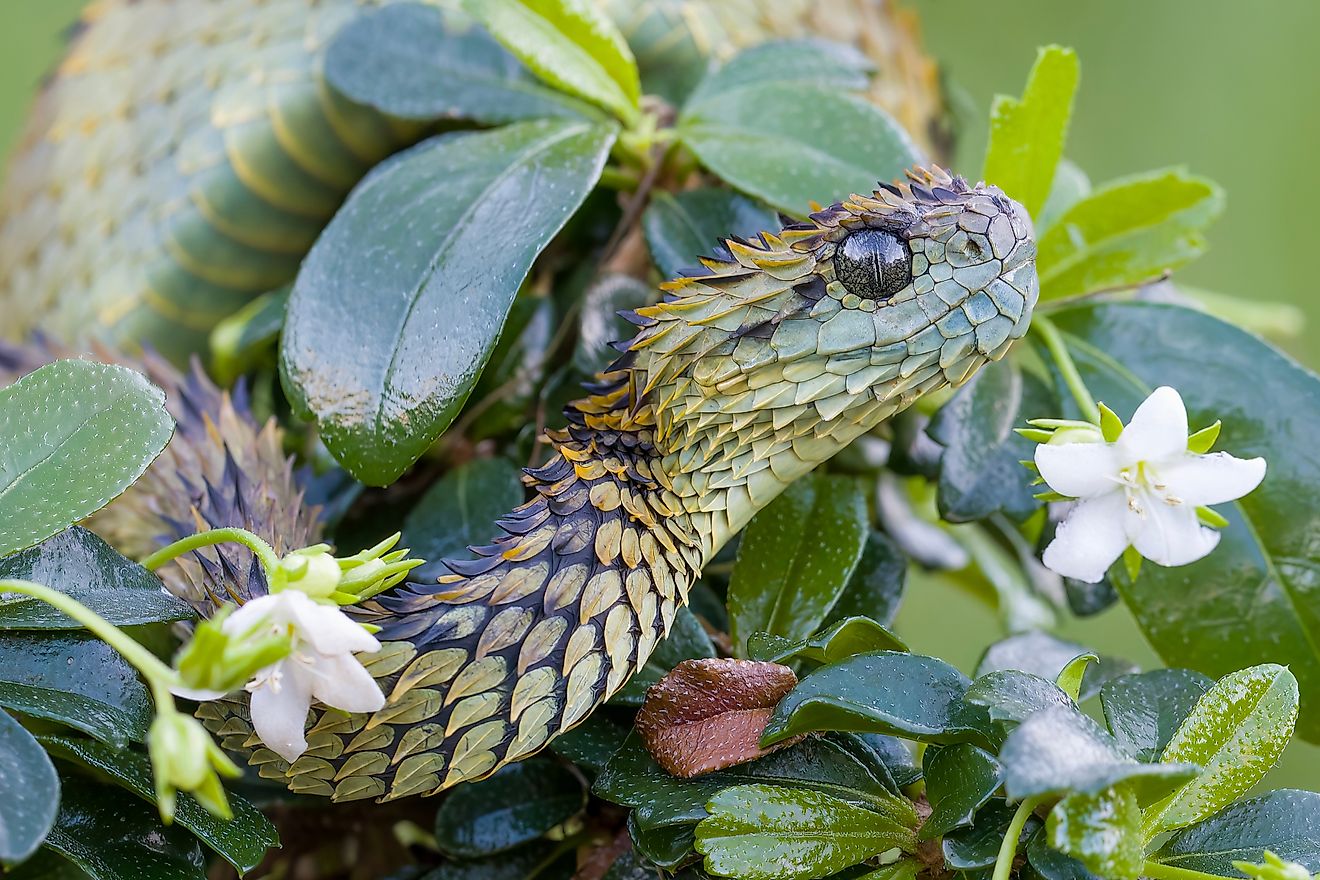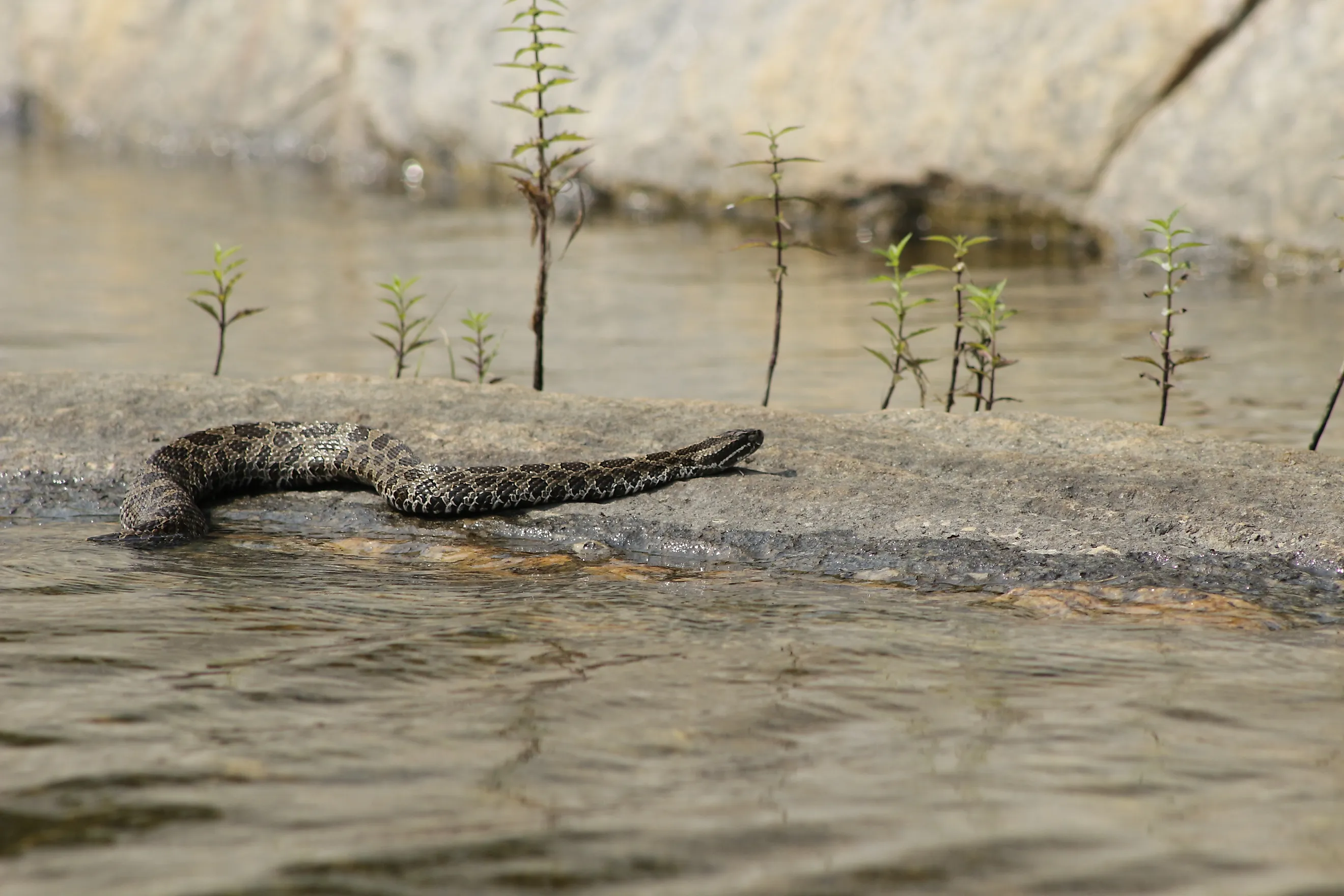
The Most Dangerous Snakes In Michigan
When staring into the beady-eyed face of a snake, observers can often feel unsettled at best. Snakes are often given a bit of negative representation in the media, such as in movies like the 2006 film Snakes on a Plane, and even Anaconda, which was released in 1997. With the frightful scenarios depicted, it's no wonder that so many Americans have a fear of snakes, some even with ophidiophobia, an anxiety disorder where fear of these animals borders on the extreme. But when looking at the big picture details of an ecosystem, all snakes, including the venomous species, play an important part in maintaining a healthy balance in nature.
This is no different in the state of Michigan, which boasts 18 species of snake, only one of which is venomous. Often, snakes are shy and secretive, avoiding human contact. However, when hiking or exploring more remote locations, it wouldn’t be out of the realm of possibility to stumble upon one of these creatures. If one is sighted by explorers, there is no need to panic. Snakes in general, especially the Eastern Massasauga, the only venomous snake in the state, avoid conflict and mainly strike in self-defense.
Eastern Massasagua
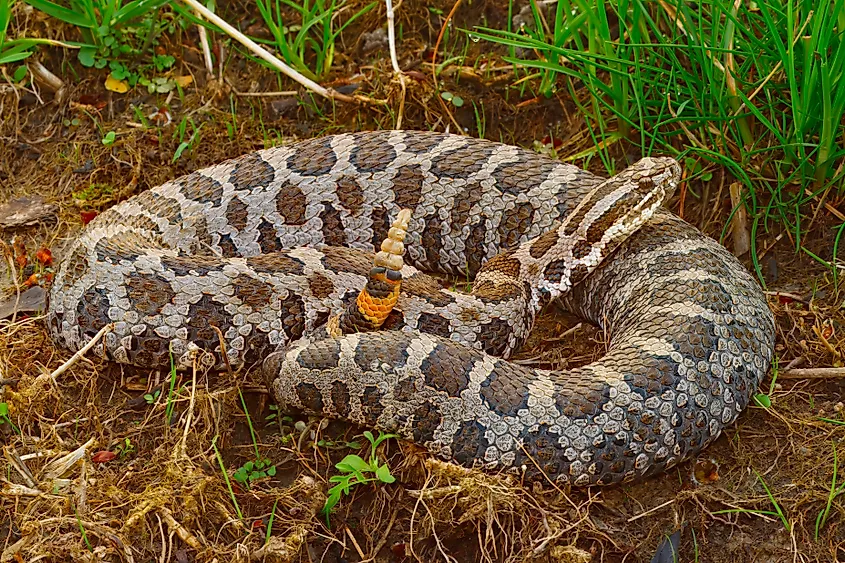
The Eastern Massasauga is normally found within wet habitats such as bogs or marshes. The main period during which the Eastern Massasauga is active is from April to late October, as it is in https://www.worldatlas.com/articles/what-is-brumation.html for the rest of the year. Brumation is a state that snakes enter during the colder months, where their metabolism slows down and they conserve energy. This is slightly different from the regular hibernation of other animals, because technically the snake is not in a deep sleep (as with bears), but instead is simply sluggish and inactive due to the snake's cold-blooded nature. They often brumate within burrows created by other animals and tree roots.

The Eastern Massasauga has several identifying features that can help even the least knowledgeable observers recognize it. The snake normally has dark colored spots which are outlined in white. The Michigan Department of Natural Resources has described the shape of these spots as “shaped like a game controller” or a “bow tie”. The size of the Eastern can range from 2 to 3 ft long, with a thicker body. It is considered a medium-sized snake.

This type of snake is part of the pitviper subfamily, which means heat-sensing pits on their face can be found on the side of its head, near the nostril. These heat-sensing pits are used mainly for hunting, as they provide the knowledge of which warm-blooded creatures are around them. This is one way to differentiate the snake from other common snakes, such as the eastern hognose snake or the eastern fox snake, as Michigan’s nonvenomous snakes do not have these pits.
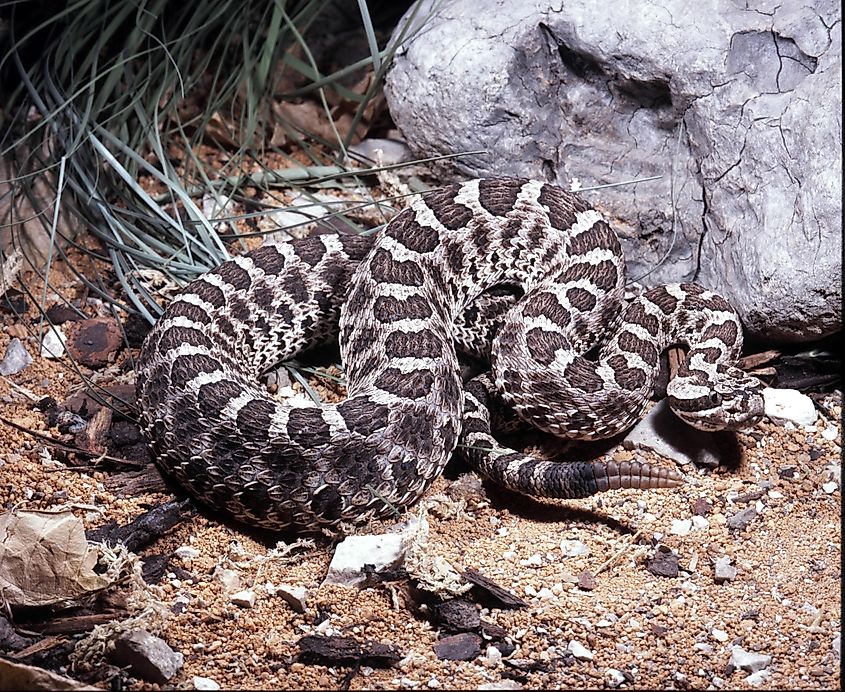
Some of the other clear signs are the slit pupils and the tail, which ends in a segmented rattle. The eyes of the Eastern Massasauga have vertical, slit-shaped pupils similar to a cat’s, while many of Michigan’s non-venomous snakes have round pupils. Neonates are born with only a single ‘button’ at the tail tip; additional segments are added after subsequent sheds, though the size will depend on how many times the snake has shed. Each time the snake sheds its skin, new material may be added to the rattle, though segments can break off over time. Shedding frequency varies with the snake’s age, health, and environment.
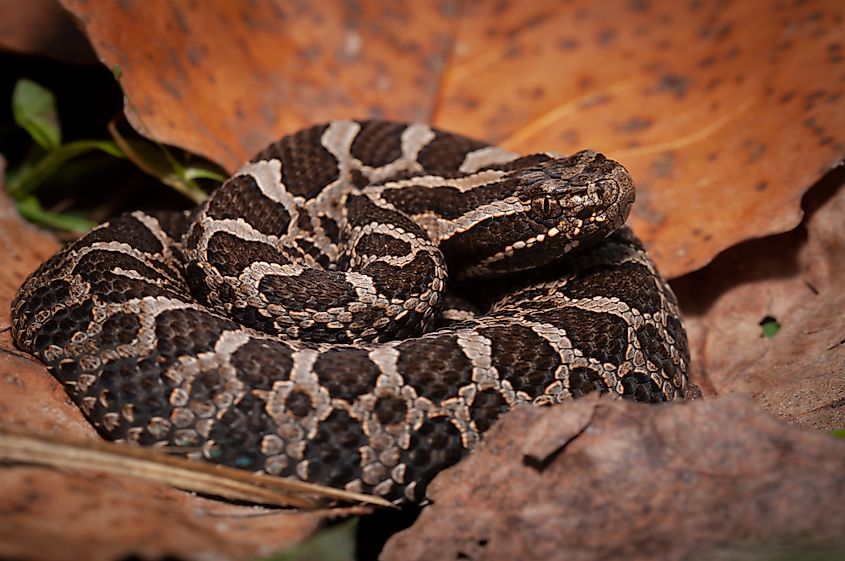
Unfortunately, the likelihood of encountering the species is low unless someone is specifically seeking it out. In 2016, the Eastern was added to the threatened species list by the U.S. Fish and Wildlife Service due to declining populations. The good news is that Michigan has more historical and extant populations than any other state or province.

The bad news is that after a 15-year study conducted by members of several partnering universities, led by Michigan State University, it was realized that so much of the snake's natural habitat has been encroached upon by human development that these snakes are turning to inbreeding when unable to find viable mates. This inbreeding poses a threat to the species as it lowers the chances of the offspring surviving and continuing to mate. The group hopes that after the publication of their study in August of 2025, the conservation effort will consider efforts to curb this threat by connecting different populations of Eastern Massasauga.
Summary and Safety Notes
It is unlikely that an Eastern Massasauga will ever cross the path of our nature-loving friends, who like to explore more remote and quiet areas. However, if one of these snakes is found during a person's travels, the first thing to do would be to give it a wide berth. These snakes do not want confrontation, and often, when they sense a predator may be near, they simply slither off to a better hiding spot.
Despite the snake being of a venomous variety, it isn't out to attack those who wander close. The fact that it is venomous may invoke fear in many, but it is important to remember that snakes are our friends. In fact, many who find an Eastern Massasauga in the wild feel lucky to have witnessed such a sight of this beautiful reptile.
